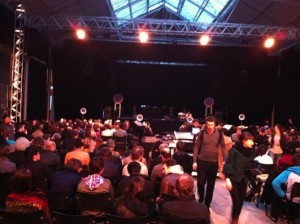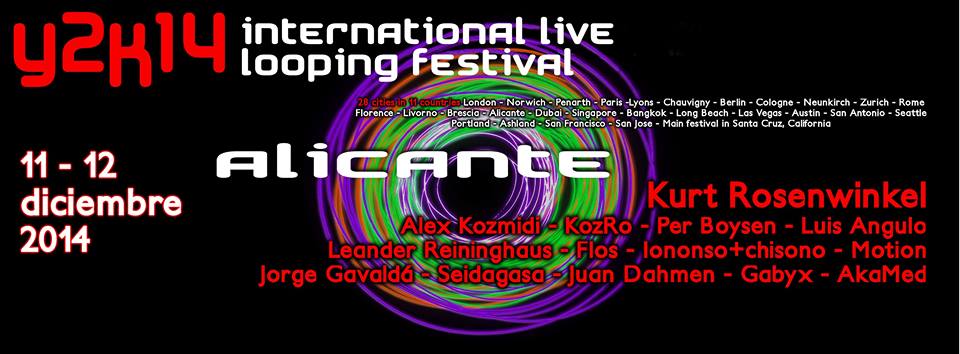During this Providence/East-coast to California tour I played only freely improvised music with a flute fronting my electronic meta-instrument. Here’s[……]
Concert in Italy
I’m happy to be representing Sweden at the International Live Looping festival hosted by Italy’s big music product fair The Music Wall on Sept 18th 20[……]
Live video from Stockholm Electronic Underground
Video excerpts of all three artist’s performances. For background, see previous post.
[……]
Concert in Alicante, Spain, dec 11 2014
Henry the Seal – live version video
Performed by Per Boysen on twelve-stringed Stick Guitar and Fractal Audio AxeFx II. This is a free-form scuba live version, the main album version i[……]
Producing octaphonic surround concerts
 I’d like to share my recent experiences from performing live with surround sound. The system dealt with is the diamond shaped surround field of eight full-range speakers. I will go into planning, preparation and stage setup strategies. The general approach is to create the most exciting live performance experience for the audience.[……]
I’d like to share my recent experiences from performing live with surround sound. The system dealt with is the diamond shaped surround field of eight full-range speakers. I will go into planning, preparation and stage setup strategies. The general approach is to create the most exciting live performance experience for the audience.[……]
Lovely Harp Guitar!
Just a quick video upload testing out my new Tim Donahue signature Electric Fretless Harp Guitar. I think it plays like a dream… in fact I have been dreaming for decades about certain aspects of what this instrument has to offer. Tim designed it and has been playing this and the fretted version since the eighties and just recently initiating manufacturing of his harp guitars. You’ll find more on that at http://www.timdonahue.com/
[……]
Playing at North Sea Jazz 2012 and more
Sub City 2064 – The Concert Trailer
Erdem Helvacıoğlu and Per Boysen performs Sub City 2064 live in eight channel surround audio. [……]
Live Stick video Y2KX+1 Festival, CA, USA
A rough clip from my Oct 16 2011 concert at Santa Cruz International Live Looping Festival. Starting out with a basic sound-check I kept on improvising to make up a 9:00 minutes piece of music. SG12 Stick Guitar with Roland GR55 synth and my home-built “meta instrument” of interactive electronics. [……]



